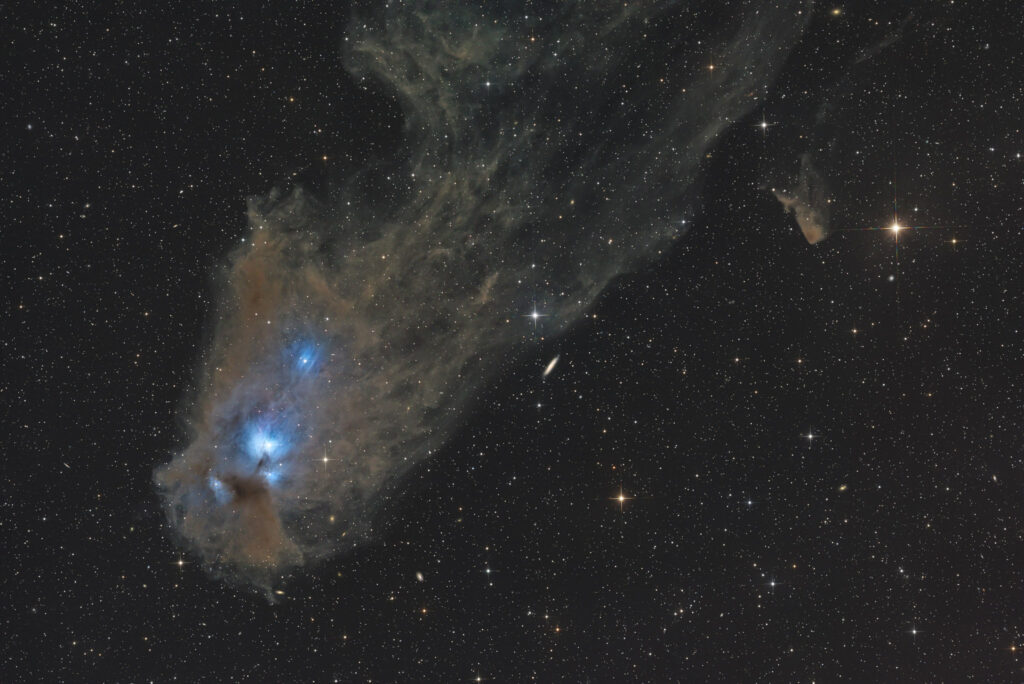
Some black and white H-alpha while the moon is more and more occupying the night.
Details at Astrobin.
Continue reading
Some black and white H-alpha while the moon is more and more occupying the night.
Details at Astrobin.
Continue reading
If you were looking for the Mystic Mountain in the previous post of the Carina Nebula, here’s an enlargement of this feature in the starless image.

Another cosmic composition of reflection and dark nebulae, vdB 123 and surroundings in Serpens.
More details at Astrobin.
Continue reading
One of most beautiful region in the southern skies, the Corona Australis Molecular Cloud with the NGC 6726 and IC 4812 reflection nebulae and nearby Chandelier Cluster NGC 6723. The later belongs to Sagittarius, though.
More details at Astrobin.
Continue reading
Most of the CGs – Cometary Globules – are in the outskirts of the Gum Nebula, CG12 here is located in Centaurus together with the reflection nebula NGC 5367.
More details at Astrobin.
Continue reading
Enough SHO images, here’s something in plain LRGB, NGC 6752, the Great Peacock Globular Cluster in Pavo.
More details at Astrobin.
Continue reading
A 2 panel mosaic of SHO data in Sagittarius, the reflection nebulae NGC 6589/90 and Surroundings, in particular the emission nebulae IC 1283 und IC 1284. NGC 6590 also seems to be cataloged as NGC 6595.
More details at Astrobin.
Continue reading
Oldie, but goldie. The Blue Lagoon, not in Iceland, but in the constellation of Sagittarius, Messier 8 (M8), the Lagoon Nebula. Remote acquistion at the IAS Observatory, Hakos, Namibia.
More details at Astrobin.
Continue reading
Another SHO image, this time from the heart of the Milkyway in Sagittarius, NGC 6559 (in the lower left) and friends.
More details at Astrobin.
Continue reading
One of the drop-dead gorgeous objects in the southern skies is the Great Carina Nebula, NGC 3372, of course. Imaged here in narrowband SHO colors with added RGB stars, using the new IAS remote telescope “Dieter”.
More details at Astrobin.
Continue reading